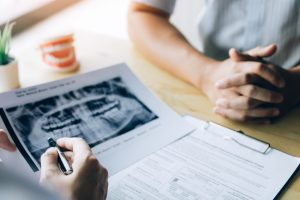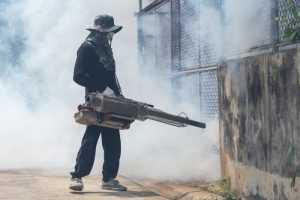Benign Prostatic Hyperplasia, or BPH in short, is a medical term for an enlarged prostate. Many males, including those in Asia, will suffer from BPH in the later stages of their lives. This adversely affects the quality of life. The chances of men getting BPH also increase with age, with half being diagnosed with BPH at the age of 50, and up to 80% at the age of 80.
But what exactly is BPH? How is this disease being diagnosed and treated? Do all men with BPH experience the same symptoms? Is BPH associated with prostate cancer? This article will seek to answer some of the common questions that you may have with regard to BPH.
What is Benign Prostatic Hyperplasia (BPH), and how is it diagnosed?
Benign Prostatic Hyperplasia, or BPH in short, refers to the enlargement of the prostate. The prostate is a gland found in the male reproductive system. It is found between the bladder and the urethra (a tube that urine flows through). As men age, the prostate gland enlarges, and this obstructs urine flow.
BPH is diagnosed mainly by a rectal examination by a doctor. The doctor will insert his or her finger into your anus and check for the size of the prostate. This test is called the digital rectal examination (DRE). An ultrasound may also be performed to aid in diagnosis and treatment types. The doctor may also order other tests to rule out other possible causes of these urinary symptoms.
BPH is not known to be associated with an increased risk of prostate cancer, hence the term ‘benign’. However, it is still possible for someone to have both prostate cancer and BPH simultaneously. Moreover, the symptoms for both conditions are largely overlapping. The doctor will order an additional blood test known as the Prostate Specific Antigen (PSA) test. High levels may point to, but is not an absolute indicator of prostate cancer. The DRE may also help check for possible prostate cancers.
Signs & Symptoms Associated with Benign Prostatic Hyperplasia
Not all men with BPH will experience signs or symptoms, and when the symptoms appear, they tend to appear gradually. Some common signs and symptoms associated with BPH include:
- Increased need to urinate, including waking up at night more frequently to urinate
- Weak urine stream
- Leaking or dribbling during urination
- Interrupted stream of urine
- Retention of urine
Treatments for Benign Prostatic Hyperplasia
The goal of BPH treatment is aimed at reducing urinary symptoms. Treatment for BPH is usually dependent on the severity of the symptoms presented. Patients with mild disease usually do not require medical or surgical treatment. Doctors may adopt a ‘wait-and-watch’ approach, supplementing lifestyle advice such as reducing caffeine and alcohol intake, regular exercise, and dietary modifications (such as more fruits and vegetables, and less red meat).
Patients with more severe diseases may require treatment. Treatment for BPH can be classified into either medical or surgical treatment.
1) Medical Treatments
Medical treatment involves the use of medication to relieve the symptoms. Most men may be required to take medications for the rest of their lives to help relieve the symptoms. The type of medication to be used is dependent on the condition of the patient.
Alpha-blockers
This group of medications is used to relax the muscles around the prostate and bladder, which in turn leads to improvement in passing urine. The effects of this group of medications can be seen almost immediately, and are often used as a first-line in patients requiring medical therapy for BPH. However, this group of medications does not prevent the progression of BPH.
Some examples of medications in this group include Alfuzosin, Terazosin and Tamsulosin. One common side effect for this group of medication include low blood pressure, especially after sitting or standing up, leading to dizziness.
5-alpha reductase inhibitors
This group of medications is used to prevent the prostate from growing bigger, and may even reduce the prostate size. They do not work immediately to reduce urinary symptoms. And maximum effect may only be seen in several months. However, this group of medications may reduce prostate size and eventually reduce the need for surgery in the future.
Some examples of medications in this group include Dutasteride and Finasteride. Side effects are rare and mild, although they may affect sexual function. This group of medications may also affect the development of a foetus. Hence, pregnant ladies should avoid direct contact with crushed or broken tablets or capsules. For women of child-bearing age administering these medications, wear gloves while handling.
Combination therapy
Patients who experience moderate to severe BPH and prostate enlargement may also benefit from combination therapy of alpha-blockers and 5-alpha reductase inhibitors. Although patients may benefit from both classes of medications in getting rapid symptom relief and preventing long-term progression, they may also experience more side effects.
2) Surgical Treatments
For patients whose symptoms are not relieved with medications, or who are unable to tolerate the side effects of the medications, may undergo surgical treatment to remove some of the prostate tissues to improve their symptoms.
Conventional transurethral resection of the prostate (TURP)
TURP is currently the gold standard for a significantly obstructing prostate. The TURP procedure involves the removal of some prostate tissues via a special device inserted through the urethra and is performed while the patient is under general anaesthesia. Although TURP is currently known to be
the gold standard for surgical treatment of BPH, it is associated with more side effects, mainly bleeding and urinary tract infections.
Transurethral incision of the prostate (TUIP)
TUIP procedures do not remove the prostate tissues. Instead, the urethra is widened, through small cuts between the prostate and the bladder. This helps with urinary symptoms. TUIP is used to treat men with BPH that do not have large prostates.
Minimally invasive techniques
Recent advancements in the surgical treatment of BPH have also developed ways to destroy prostate tissues. They include methods such as using lasers, water vapour, or microwaves (transurethral microwave therapy, TUMT). These methods do not require general anaesthesia (unlike TURP), and also have fewer side effects compared to TURP.
Another minimally invasive technique is the prostatic lift procedure. A device is introduced via the urethra opening to increase the size of the urethra by lifting the enlarged prostate, thus reducing the obstruction to the urinary flow.
Do not feel troubled
Many men develop BPH, especially in the later years of their lives. In view of our ageing population, the prevalence of this disease is only going to increase further in the next decades. With such a huge array of treatment options available, patients should not have to suffer or feel troubled by their symptoms and disease. Schedule an appointment with a doctor to discuss what you can do about it now!













